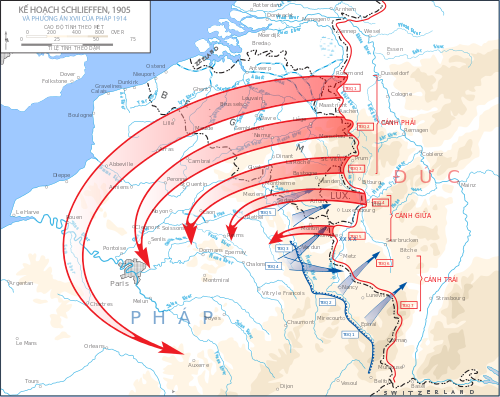Learn
Overview
It seems the great powers of Europe had set a very dangerous course for the future, and they would soon be involved in the most violent, bloody, and extensive war the world had ever known. Before it was over in 1918, more than 9 million people were dead, and this was only the beginning. Therefore, the first fifty years, brought unprecedented loss of life and sweeping, political, economic, and social change to the world. Because of the invention of the camera and the emergence of film technology, you will now see actual film footage of the events you're studying!
MANIA
Back to our lesson title, it’s going to be quite easy for you to recall the majors causes of the First World War, because you will have an acronym to help you remember them - MANIA. What does this word mean? Obsession, desire, love, craze, enthusiasm, fad, hysteria.
- M = Militarism
- A = Alliances
- N = Nationalism
- I = Imperialism
- A = Assassination
Militarism
First, consider Militarism. Cartoon Title: “It Shoots further than He Dreams”
Who is depicted shooting the cannon in the cartoon?
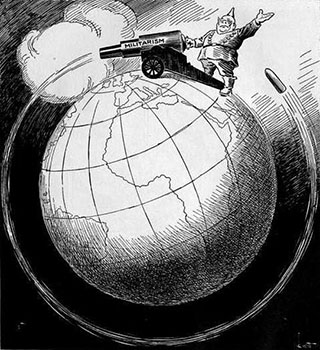
Because they felt they needed to protect their colonial gains, by 1914, Europe was armed to the teeth. Suspicion and hatred of other nations caused buildup and call for arms, and as new weapons of warfare were developed; nations increased military expenditures were way out of proportion to their defensive needs. Read 5 Key Causes of World War I. Make sure to watch the video for an overview of militarism and other causes.
Alliances
Examine this map closely. Based on what you know, what would Bismarck have said about the formation of the Triple Alliance? Germany was doomed to fight a two-front war.
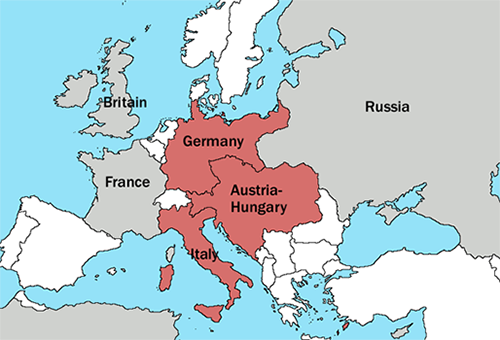
Bismarck
Do you remember Otto Von Bismarck, the Chancellor of Germany who was credited with completing the unification of the German state? Bismarck realized that Germany made many enemies during the unification process, and he was intent on keeping the peace through the creation of a complex alliance system. Basically, it was Bismarck’s goal to keep Germany from ever having to fight a two-front war, and this is how he did it.
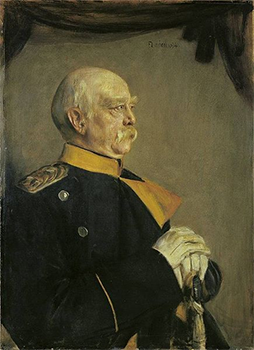
Triple Alliance and Triple Entente
- Germany, Austria-Hungary, Italy - Triple Alliance
- England, France, Russia - Triple Entente
The Alliance System
This complex group of alliances, created by Bismarck, was known as the Entangling Alliance System. Some felt such heavily armed arrangements would result in a balance of power, and therefore, peace. Unfortunately, the opposite proved true. Also, nations carried on secret diplomatic negotiations that crossed and double crossed purposes.
Nationalism
By 1914 several European nations were hotly competing for lands they felt belonged to them. Patriotic fervor was at its height in the European countries, and they took advantage of any opportunity to show their support for their name of the nation, even if that meant war.
Imperialism
Economic rivalry. By 1914, most of the habitable portions of the world were divided by the various powers, each suspiciously recognizing the others’ sphere of influence. Think back to tragic land grab that of Africa that occurred in the late 19th century, and consider this. Once countries acquire the colonies, they will need armies to hold on to them. Read Imperialism as a Cause of World War I for a short explanation of the imperial rivalries that emerged in this period.
Assassination
Here are the tombs of the heir to the Austrian throne, Archduke Franz Ferdinand and his wife Sophia. Remember it takes people to make war. Roots of violence are there, and the assassination of Austrian Archduke Franz Ferdinand and his wife Sophia by Serb nationalists in Sarajevo, Bosnia, June 28, 1914, was the final spark that caused the explosion of World War I.
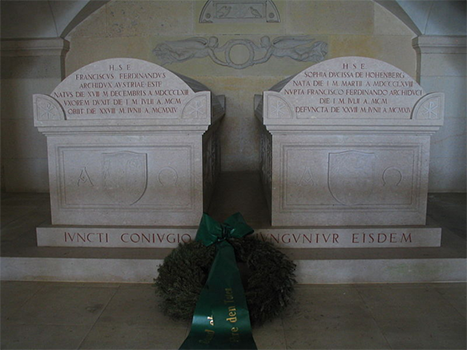
Can You Imagine?
Think about the security that accompanies a head of state today.
- Can you imagine the President of the United States traveling anywhere without a massive security presence?
- Can you even imagine the driver of his car not having exact map instructions for the route?
Well, that was not the case for Archduke Franz Ferdinand of Austria, the heir to the Austrian throne, and his wife, Sophia, because they were the victims of one of the most bizarre and costly political assassinations in history.

Archduke Franz Ferdinand's Doomed
Think about the security that accompanies a head of state Remember, the Austro-Hungarian empire was very diverse, and it became increasingly difficult for the emperor, Franz Joseph, to maintain peace and stability in his territories. Let’s learn more about the story of the Archduke Franz Ferdinand’s doomed visit to Sarajevo, Bosnia, in June 1914. On that ill-fated day, June 28, 1914, the assassins actually had two chances to kill him.

Imagine the security breakdown that occurred on that day. Gavrillo Princip and the other members of the Serb nationalist society, the Black Hand, because of a bizarre turn of events, were given another chance to kill Franz Joseph, and this time they did not fail! Read more about this assassination at Assassination of Archduke Ferdinand.
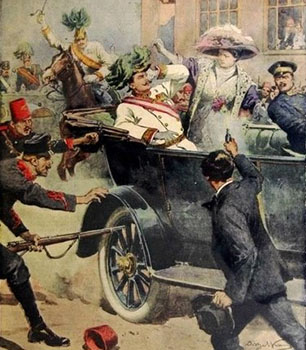
Within six weeks of the assassination of Archduke Franz Ferdinand (from June 28, 1914 to August 3, 1914), a series of events of rapidly led to all-out war. Austria-Hungary Delivers Ultimatum To Serbia Before World War I explains how rapidly war engulfed the European continent.

Timeline
For a quick review of the timeline of the major events and battles of the First World War, go to PBS The Great War: WWI Timeline 1914.
Hint: It’s a great study resource for you.
Schlieffen Plan
In the event war broke out in Europe, Germany had developed an offensive military strategy that they thought would bring a rapid end to the war called the Schlieffen Plan.
Remember, Bismarck's primary objective was to make sure Germany never had to fight a two-front war. However, in the event of war, Germany's plan was to attack and rapidly defeat their archrival, France, so they could then turn all their military eastward to defeat Russia. General Schlieffen wanted to attack Russia before they could complete mobilization – the final military step before war. His plan depended on a quick and decisive victory over France, not a war of attrition, where one side wears down the enemy until they surrender.
Watch The Schlieffen Plan for an overview of Germany’s strategy. Note: this video may take a minute to load.
When war came in August of 1914, Germany put the Schlieffen Plan in action and began the invasion of France. However, the plan failed at the Battle of the Marne, September 6, 1914, and the world settled in for a long and costly war in the trenches of France. Watch The First Battle of the Marne (2:03) for an examination of the Battle of the Marne.
